As AIDS, HIV awareness among PH youth declines, cases, deaths rise
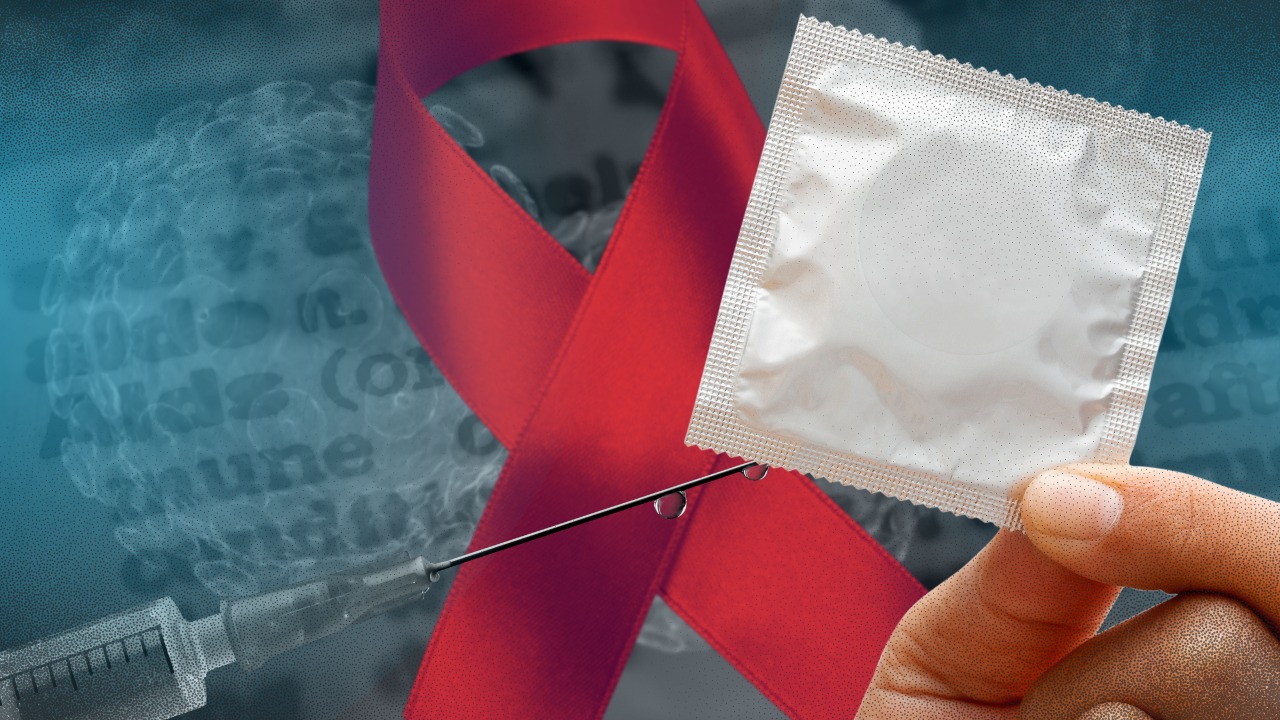
INQUIRER FILE PHOTO
MANILA, Philippines—The HIV and AIDS epidemic in the Philippines is worsening, but the percentage of young Filipinos who are aware of the disease had fallen to its lowest since 1994.
This was revealed in the 2021 Young Adult Fertility and Sexuality Study (YAFS5) conducted by the University of the Philippines Population Institute (UPPI), which said that last year, only 76 percent of 15 to 24 year olds have heard of HIV and AIDS.
It was a 19-percentage point drop from 95 percent in 1994. HIV and AIDS awareness was still 95 percent in 2002, but a decrease was seen in 2013, when the share of youth who have heard of the virus and the disease fell to 83 percent.
UPPI said this was concerning since a low level of awareness and insufficient knowledge of HIV and AIDS can stall efforts to arrest the increasing number of infections in the Philippines.
As mentioned by the Department of Health (DOH), the Philippines has the fastest-growing HIV epidemic in the Asia-Pacific region, with a 237 percent increase in annual new infections from 2010 to 2020.
Article continues after this advertisementREAD: HIV spread fastest in PH – study
HIV—human immunodeficiency virus—is a virus that attacks the body’s immune system, the US Centers for Disease Control and Prevention said. If HIV is not treated, it can lead to AIDS—acquired immunodeficiency syndrome.
Article continues after this advertisement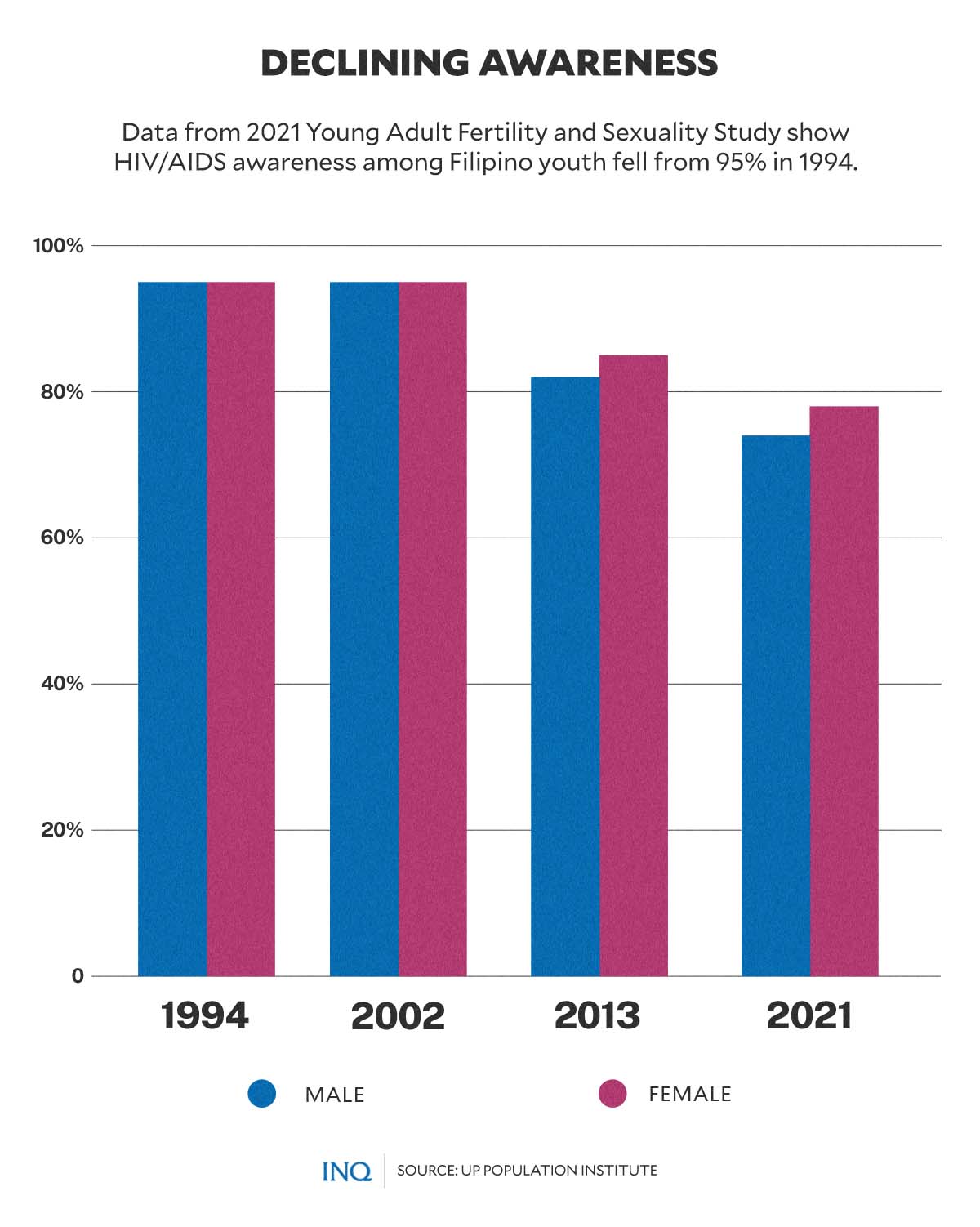
GRAPHIC: Ed Lustan
AIDS is the most severe stage of HIV, next to acute HIV infection (first stage) and chronic HIV infection (second stage). People with AIDS can have a high viral load and may easily transmit the virus. Without treatment, AIDS can lead to death.
Based on DOH data, AIDS-related deaths in the Philippines have increased by 315 percent—from 200 in 2010 to 820 in 2020. In 10 years, 4,890 in the Philippines had died of the disease.
Lack in deep knowledge of HIV, AIDS
According to Karger, a Switzerland-based publishing company that focuses on health and science, increasing knowledge and awareness about HIV and AIDS is one of the most crucial strategies in the prevention of infections and the disease.
This was the reason that UPPI said the low level of awareness and insufficient knowledge of HIV and AIDS could become a hindrance in preventing the spread of infections.
Out of those who have heard of HIV and AIDS, the UPPI also examined the percentage of those with comprehensive knowledge of the virus, based on five standardized statements consisting of a mix of right and wrong knowledge about HIV.
UPPI revealed that based on the results of the YAFS5, only one in five youth has comprehensive knowledge of the virus. The percentage significantly changed in women—from 16 percent in 2013 to 19 percent in 2021.
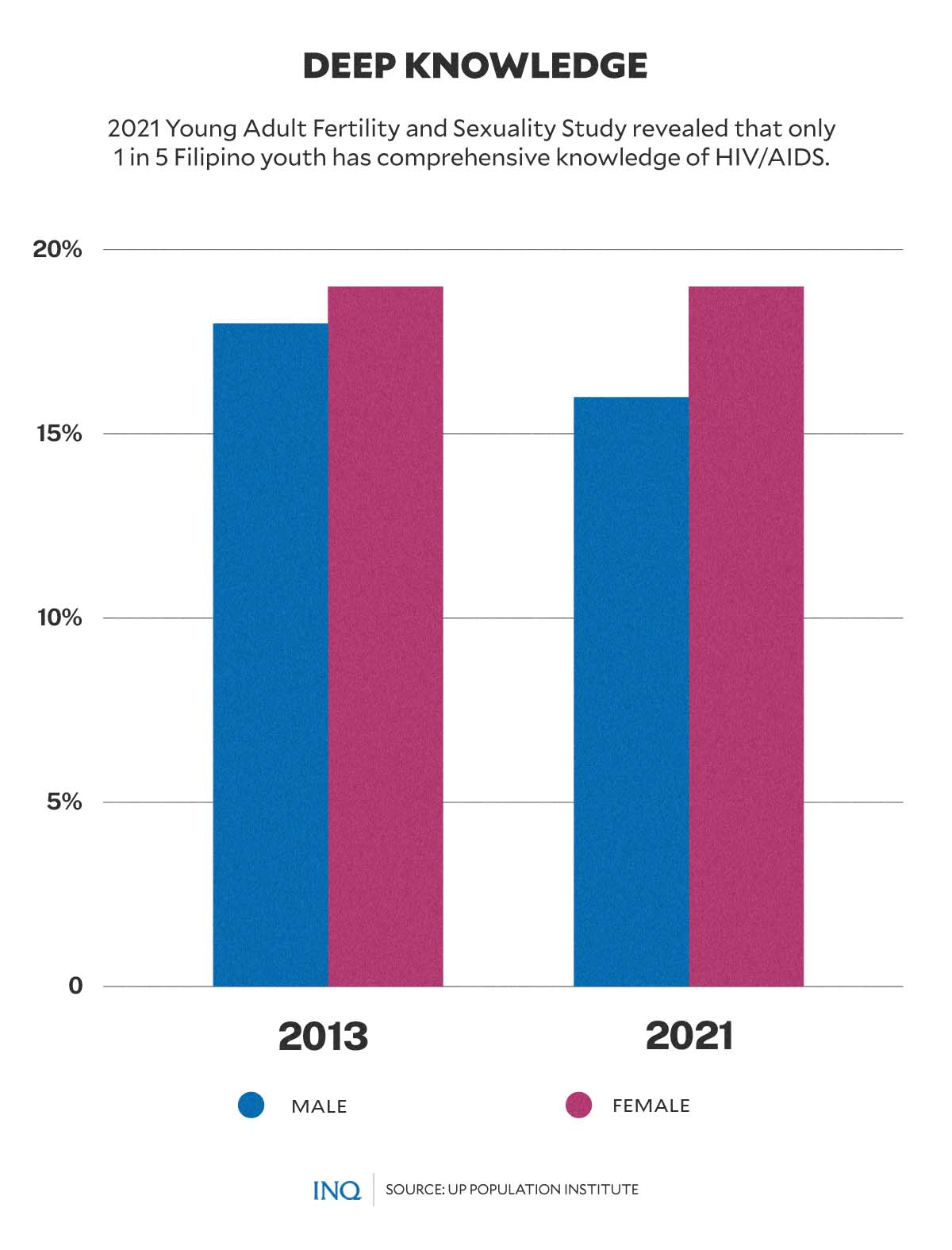
GRAPHIC: Ed Lustan
While there was a slight change in the percentage of men who have comprehensive knowledge of HIV, UPPI stressed that it was not statistically significant—from 18 percent in 2013 to 19 percent in 2021.
YAFS5 found that 52 percent of young Filipinos incorrectly believed that a person can get HIV by sharing food with someone who is infected. About two in five did not believe that a healthy-looking person can have the virus.
Some 35 percent also did not believe that a person can reduce the risk of getting infected with HIV by using a condom every time they have sex. YAFS5 data revealed that among youth who have ever had sex, only a fifth have ever used a condom.
Likewise, 27 percent did not believe that the risk of transmission can be lessened by having sex with only one partner who is not infected and who has no other sexual partners, while 24 percent incorrectly believed that a person can get HIV from mosquito bites.
Not enough awareness in BARMM
YAFS5 found that awareness of HIV and AIDS is highest in Central Visayas at 87.4 percent, but lowest in the Bangsamoro Autonomous Region in Muslim Mindanao (BARMM), where knowledge of the virus and the disease stood at only 38.8 percent.
According to the University Research Co., a company dedicated to improving the quality of health care, social services, and health education all over the world, the armed conflict in BARMM contributed to its present socio-economic condition.
“The region suffers from a lack of equitable access to health care and weaknesses in the quality of health care. Inequitable gender norms have also undermined health outcomes,” it said.
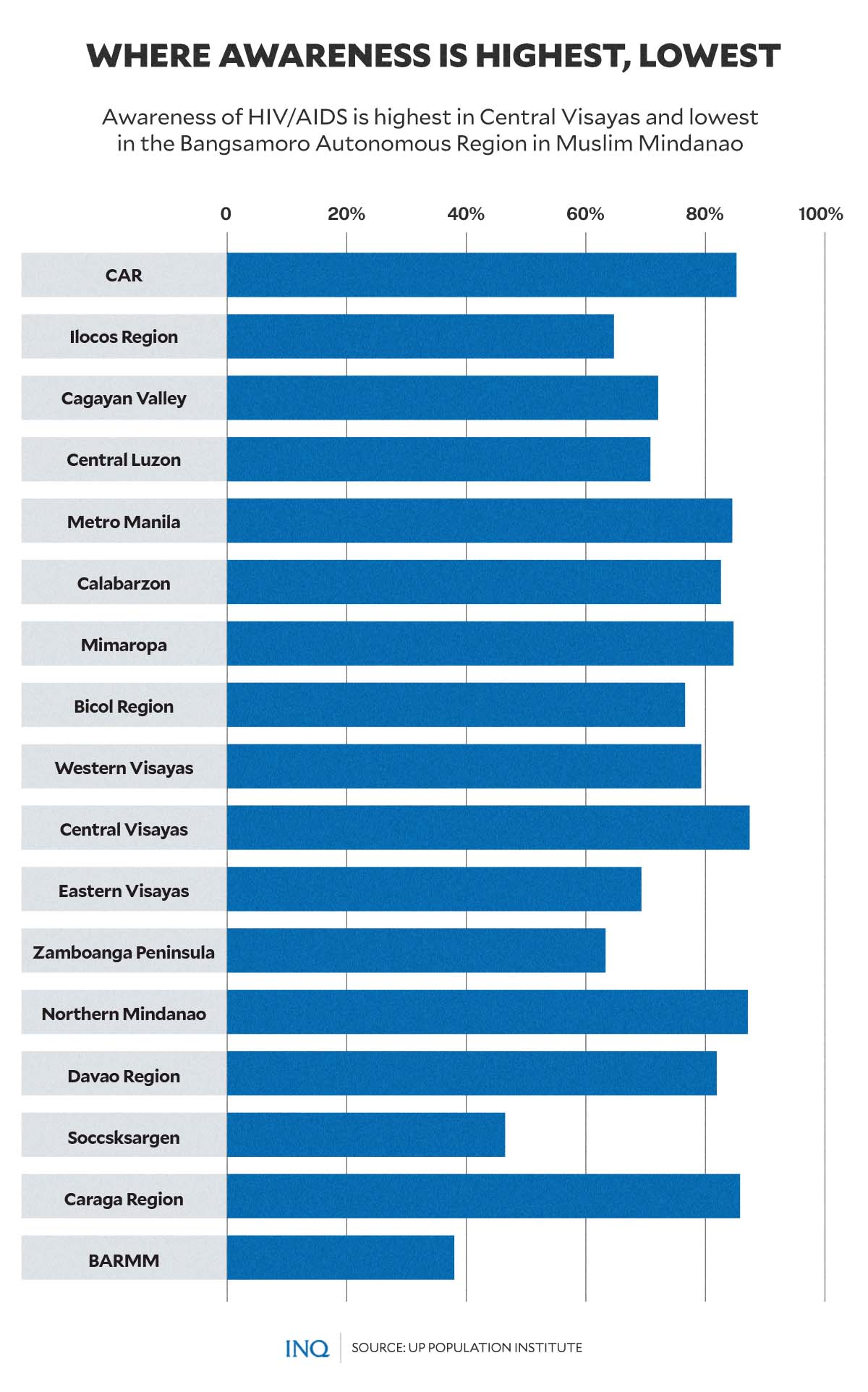
GRAPHIC: Ed Lustan
Soccsksargen’s 46.5 percent is next to BARMM as the region with the lowest level of awareness of HIV and AIDS. The next lowest was Zamboanga Peninsula at 63.3 percent and Ilocos Region at 64.7 percent.
The regions next to Central Visayas in terms of awareness were Northern Mindanao (87.1 percent), Caraga Region (85.8 percent), Cordillera Administrative Region, or CAR (85.2 percent), Mimaropa (84.7 percent) and Metro Manila (84.5 percent).
Calabarzon has 82.6 percent level of awareness, while Davao Region has 81.9 percent. Western Visayas has 79.3 percent, Bicol Region has 76.6 percent, Cagayan Valley has 72.1 percent, Central Luzon has 70.8 percent, and Eastern Visayas has 69.3 percent.
Rise in cases, deaths concerning
The DOH had said while the total HIV prevalence in the Philippines is less than one percent, the total estimated number of people living with HIV (PLHIV) in 2020 hit the 115,100 mark, an increase from 99,600 in 2019.
According to data from the department, there were 5,000 new infections in 2010, 5,100 in 2011, 5,900 in 2012, 7,200 in 2013, 8,700 in 2014, 9,800 in 2015, 10,700 in 2016, 12,300 in 2017, 13,900 in 2018, 15,200 in 2019, and 16,700 in 2020.
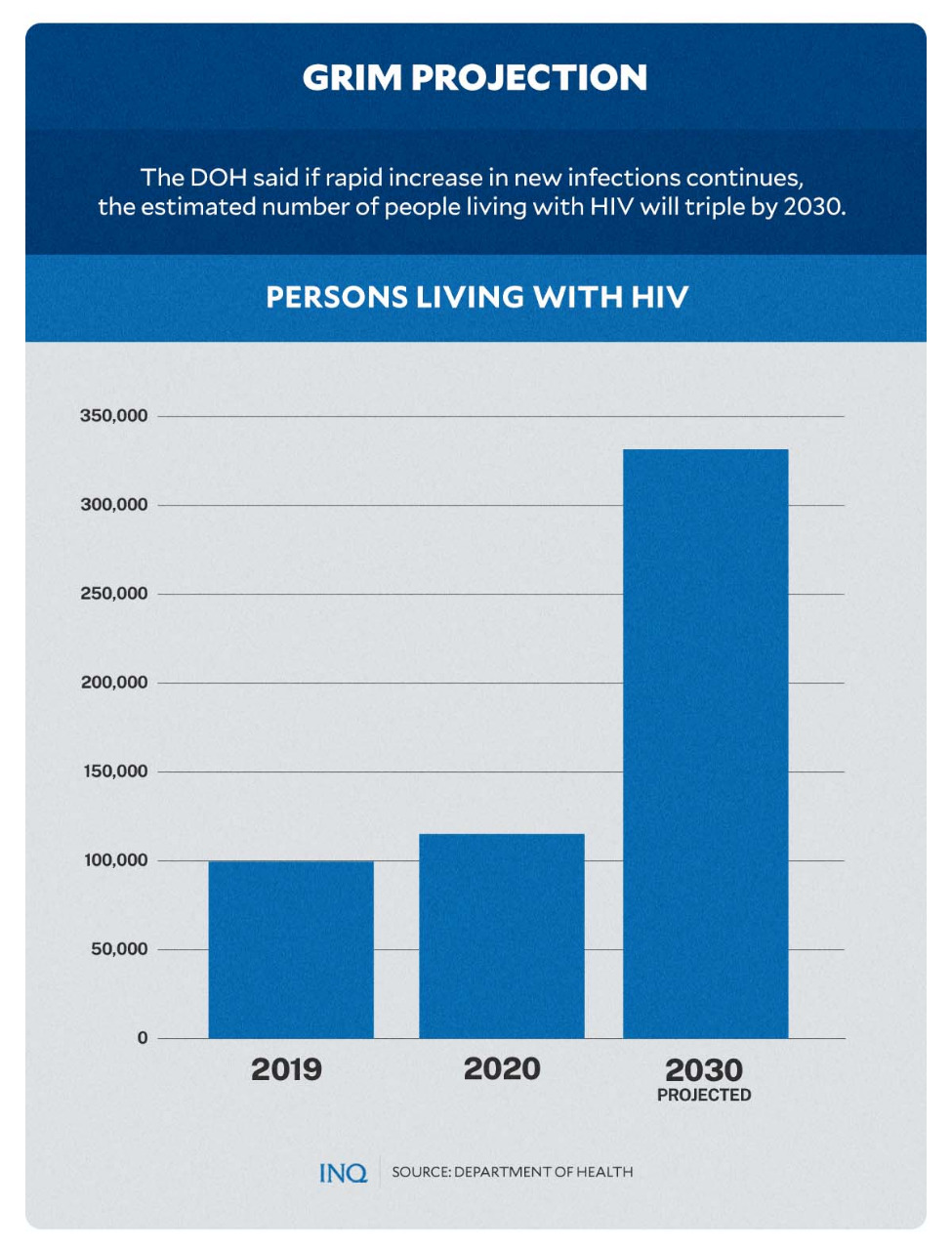
GRAPHIC: Ed Lustan
It stressed that if the rapid increase in new infections will persist, the estimated number of persons with HIV was expected to reach 331,500 by 2030. Back in 2019, out of the 99,600, 73 percent knew their status but only 44 percent were receiving antiretroviral treatment.
The DOH in 2020 had categorized a total of 118 local government units as “high burden areas” which have a median HIV case-infected population ratio of 10.5 for every 10,000 individuals.
RELATED STORY: Advocate: HIV still ‘silent epidemic’ amid COVID-19 threat
Out of the 115,100 persons with HIV in 2020, 38,700 were from Metro Manila, 19,300 were from Calabarzon, 11,900 were from Central Luzon, 11,400 were from Central Visayas, and 6,900 were from Davao Region.
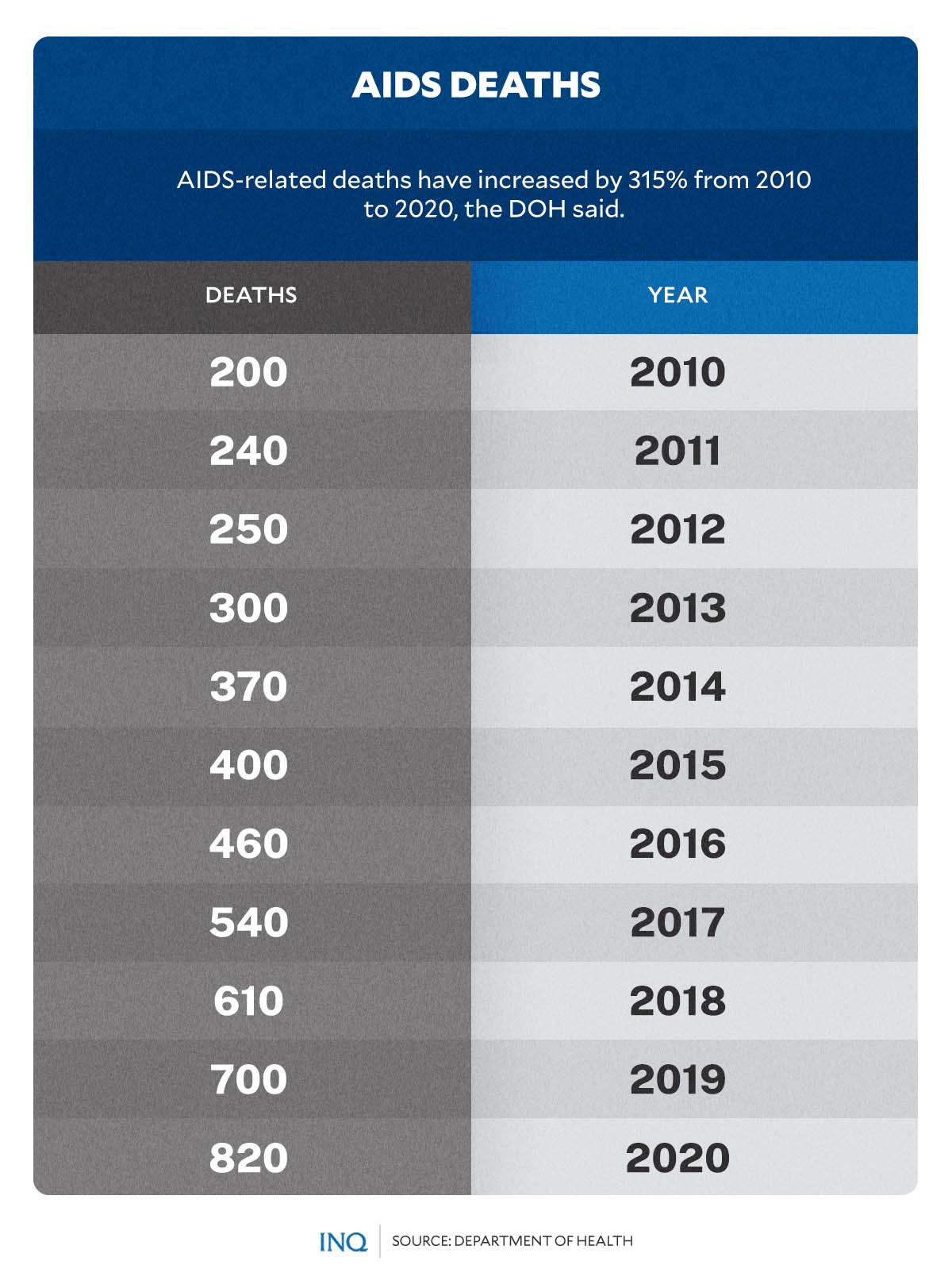
GRAPHIC: Ed Lustan
The regions with the least number of infected persons were BARMM (300), CAR (1,300), Caraga Region (1,300), Mimaropa (1,600), Cagayan Valley (1,700), Eastern Visayas (1,700), and Zamboanga Peninsula (1,700).
Intervention important
As stressed by the DOH in its “A Briefer on the Philippine HIV Estimates,” a total of 152,300 HIV infections were averted by the Philippines because of interventions established in HIV response since 2005.
“If no interventions were put in place between 2005 and 2020, the total cumulative HIV infections for 2020 would have reached 274,800, double the amount projected for the current estimates which is at 122,500,” it said.
The DOH stressed that with continued improvement in the country’s HIV response, more HIV infections could be averted and more lives saved from the virus and the disease.
But as of 2020, the Philippines is still far from accomplishing the 95-95-95 targets, which aims to diagnose 95 percent of cases, provide antiretroviral treatment for 95 percent of those diagnosed and achieve viral suppression for 95 percent of those treated by 2030.
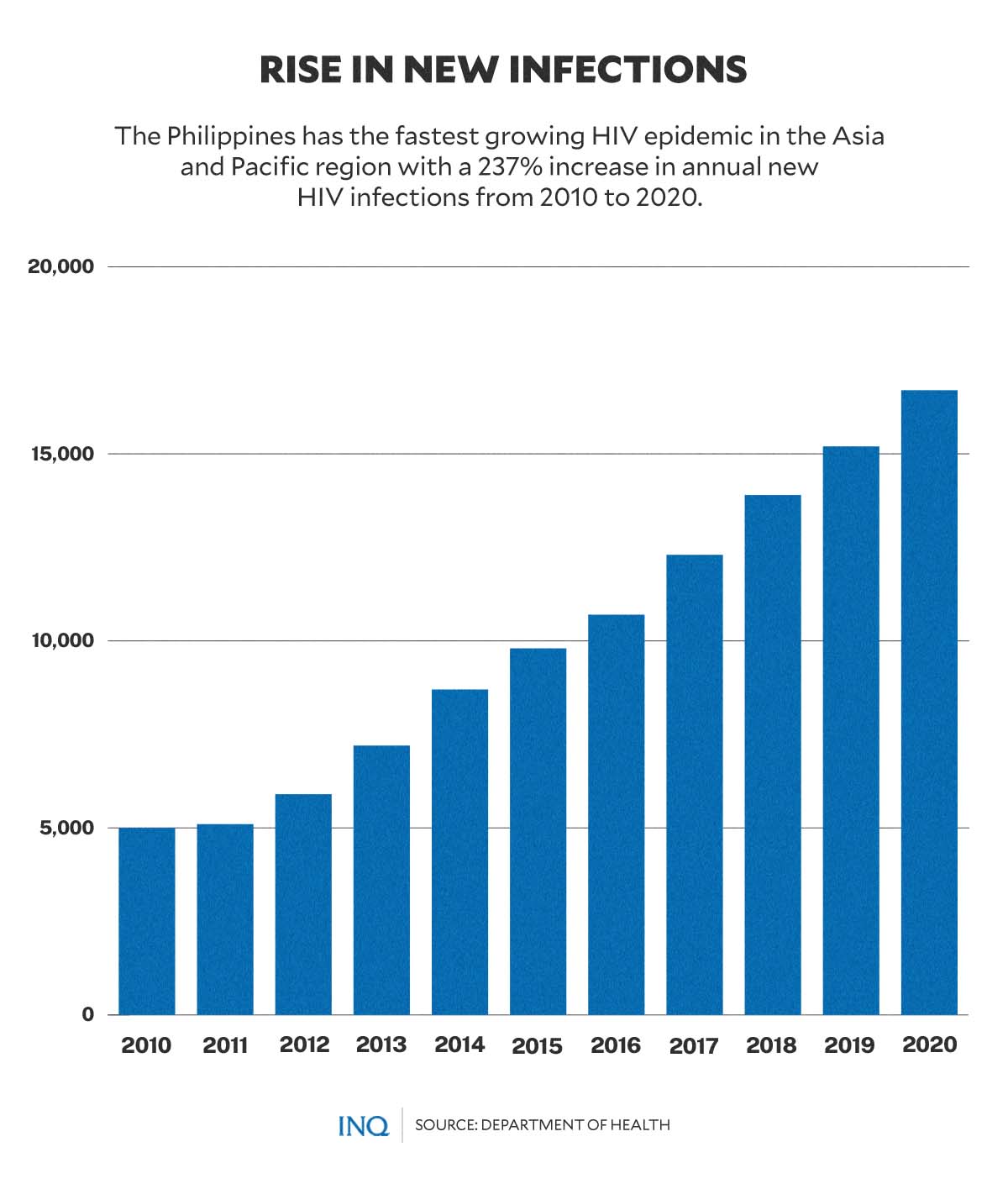
GRAPHIC: Ed Lustan
Based on DOH data as of December 2020, a total of 78,291 persons out of 115,100 have been diagnosed based on HARP data, indicating that the diagnosis coverage for the Philippines that year was 68 percent.
READ: How is PH faring in HIV treatment?
Out of the 78,291 at least 59,933 were enrolled in treatment and 47,977 are presently on antiretroviral treatment. From the first pillar to the last, a total of 67,123 persons with HIV were lost along the cascade of care, and were therefore not given access to life-saving treatment.
Breaking barriers
With antiretroviral treatment, HIV is no longer a death sentence, however, the stigma, which is stirred by misconceptions about the virus, persists.
READ: No longer a death sentence
It was in 2018 when then President Rodrigo Duterte signed Republic Act No. 11166, or the Philippine HIV and AIDS Policy Act.
The World Health Organization welcomed the new law, saying that it will help elevate attention to HIV and AIDS and address some of the critical bottlenecks in the HIV program in the Philippines.
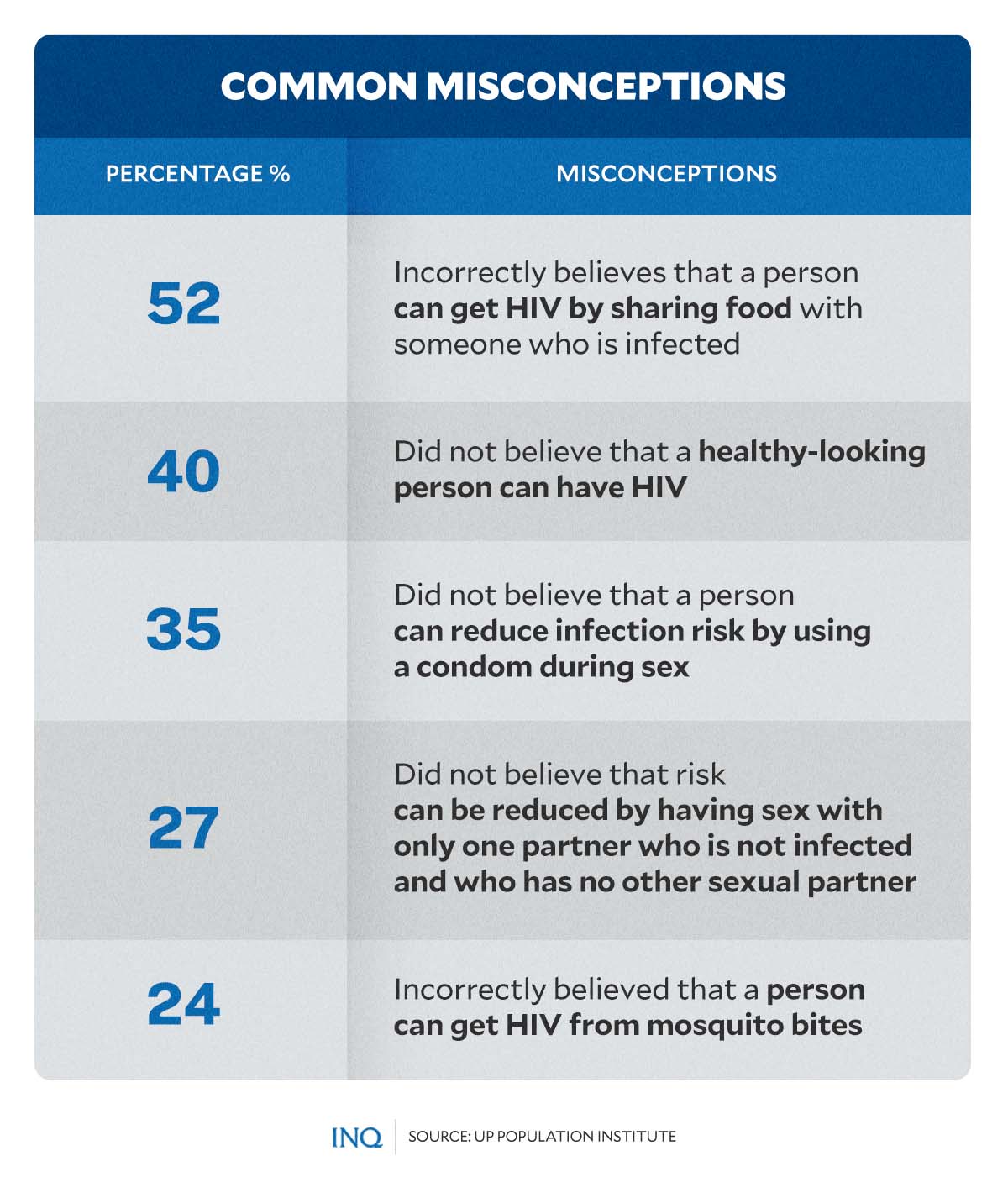
GRAPHIC: Ed Lustan
This, as HIV continues to be a serious health threat in the country with a record high of 32 reported infections per day.
The law, it said, will help in expanding access to evidence-based HIV prevention strategies. Access to means to prevent sexual transmission of HIV and transmission associated with drug use—such as condoms and other commodities—remains a critical need for curbing the rising epidemic.
Likewise, the new law will facilitate easier access to learning about one’s HIV status, in particular for young people aged 15 years old and above who can now undergo an HIV test without parental or guardian consent.
“This is critical to intensify the response among the youth, who represent 62 percent of new HIV infections in the country. HIV testing is now also a routine procedure of prenatal care to prevent HIV infection from mother to child during pregnancy, labor and breastfeeding,” it said.